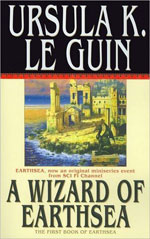 I can be pretty fanatical about my love for U2. Since 2000’s All That You Can’t Leave Behind, their music has been fiercely personal and deeply spiritual for me.
I can be pretty fanatical about my love for U2. Since 2000’s All That You Can’t Leave Behind, their music has been fiercely personal and deeply spiritual for me.
So yesterday’s surprise news at the Apple event that U2 was releasing a brand new album and giving it away for free? Incredible.
There was a mad scramble as 500 million iTunes users powered up the program (many of us for the first time in a long time) and tried to grab the new album. Once I finally got it downloaded, I had to sit back and let it play.
The last time a new U2 album came out—2009’s No Line on the Horizon—I sat at the kitchen table and streamed the entire thing on MySpace (yeah, remember MySpace’s short-lived second life as a music site?) while waiting for news of my son Milo’s adoption.
Listening to U2's new album (myspace.com/u2: pick NLOTH from the playlist drop down) while waiting for word on our adoption. It's a good day
— Kevin D. Hendricks (@kevinhendricks) February 20, 2009
(We cleared court and were able to announce Milo’s adoption to the world later that day.)
U2’s music is special, and that first listen is always interesting. I like to grab my initial thoughts on a new U2 album. It’s funny because it’s hard to judge music on a single listen. The songs you hate at first grow on you. The songs you loved can get tired. So you end up being wrong. But it’s still fun. I did it with No Line on the Horizon and before that with 2004’s How to Dismantle an Atomic Bomb.
Songs of Innocence
What’s perhaps most interesting about this album is that U2 has been working on putting out an album for ever. Bono has said they’ve recorded several albums, they just haven’t released them. And now they drop the album with very little warning. If you were following the rumors, there was talk that we’d get a new album in 2014, then in September, then a week before the Apple event there were unconfirmed rumors about U2 being involved. But we never had a single, never had an album name, never had a date and the Apple rumors were denied right up to the day. It’s a very different release strategy (compare it to the hype for How to Dismantle an Atomic Bomb, which also included a big Apple partnership).
The album is also being described as a very personal one, reaching back to U2’s roots as teenagers.
My Song-by-Song First Impressions
So with all that, my initial thoughts as a fan:
“The Miracle (Of Joey Ramone”
It feels bold and joyful, crisp and fun. I love the guitar, love the driving beat. I like the line, “Music so I can exaggerate my pain.” Really like the abrupt end.
“Every Breaking Wave”
I like the sonic feel of this album.
“California (There Is No End to Love)”
I hate the “Santa Barbara’s” at the beginning, but once it gets going it’s better. I love the idealism in the lyrics: “All I need to know is there is no end to love.”
“Song for Someone”
Slowing it down. I like the echoing on the verses. Thematically it reminds me of “Stuck in a Moment” “Sometimes You Can’t Make It on Your Own.”
“Iris” (Hold Me Close)
It reminds me of “Miracle Drug.” But it has a deeply melancholy feeling (I read later that Iris is Bono’s mother, who died when he was 14).
“Volcano”
I like the thumping bass. It has that ‘garbage can’ feel reminiscent of “All Because of You,” though this is a little more polished. I like the driving beat. The album seems to get darker and grittier from here on.
“Raised by Wolves”
Huh? This is different. The near spoken word delivery remind me of “The Wanderer” and the chorus has echoes of “Bullet the Blue Sky” and early U2. As much as U2 embraces belief, they also embrace doubt: “I don’t believe anymore.”
“Cedarwood Road”
More of the gritty feel. Nice acoustic guitar in the mix. “A heart that is broken is a heart that is open.”
“Sleep Like a Baby Tonight”
Wha? Weird keyboard stuff at the start. This one is dark and ethereal. I like the falsetto on the bridge: “Hope is where the door is / When the church is where the war is.” I don’t know what that means, but I like it.
“This Is Where You Can Reach Me Now”
More of the gritty sound. This one is fun. I like the “choir-ish” vocals. It doesn’t sound like U2 and I love that.
“The Troubles”
I like the guest vocals from Lykke Li. Bono is amazing, but I wish they would experiment like that some more. This is a dark closer, but it’s hopeful. I like how it ends.
Songs of Innocence as a Whole
I’m not sure what I think of the whole album. No Line on the Horizon was a so-so album, and I think there are elements of that here. But it also feels like they push past that and create some better stuff. I’m still not sure if I have some standout songs. I like “The Miracle,” but it doesn’t strike me like other singles have. Not yet anyway.
I do like the thematic approach. They feel like more personal songs.
Anyway, there it is. New U2. Check out RollingStone‘s song-by-song take and their interview with Bono.






